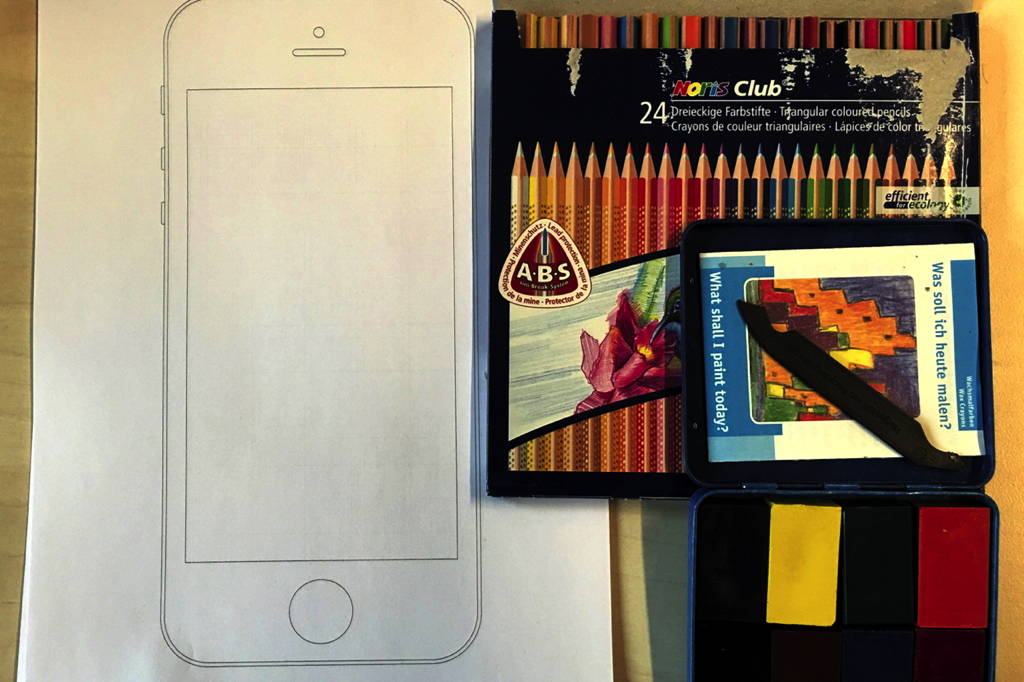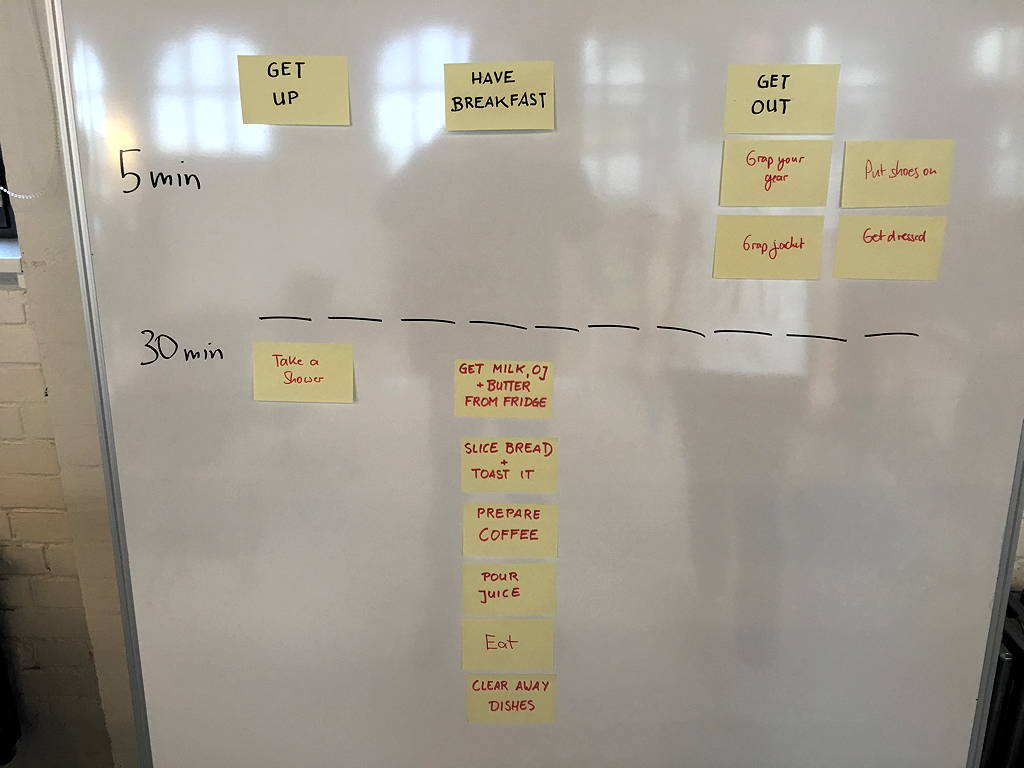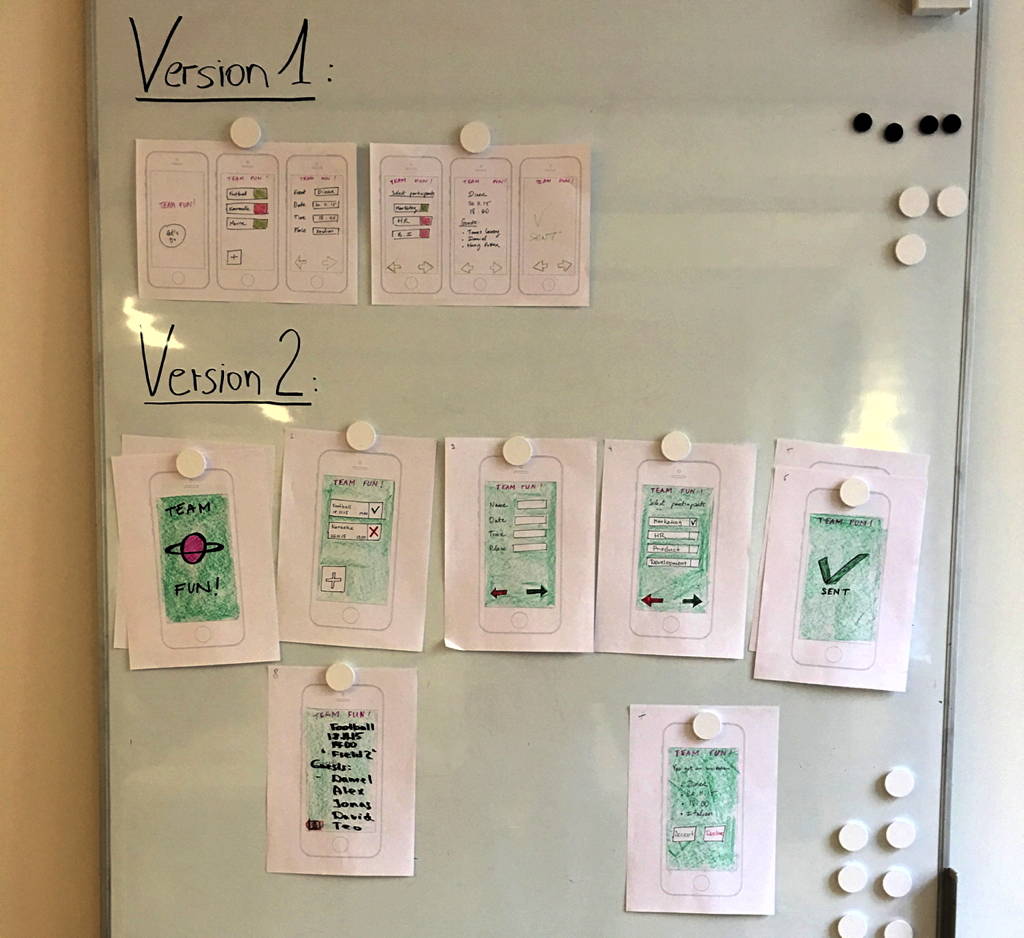TL;DR:
Yes, even absolute beginners can prototype an app. And learn a lot about product management, product design and user experience along the way. It is a low cost exercise that will greatly improve communication within your organization.
Intro: Why Organizing An App Prototyping Workshop?
A few weeks back, I wrote a post called “No More LEGO® At Agile Workshops – I Am Tired Of Building Airports” where I shared my frustration with the common use of certain exercises in workshops that I find unsuitable. I also said I would try something different: creating app prototypes using one of the many prototyping apps available. Here’s what I’ve discovered after three workshops of this experiment.
The Challenge: Make Other Departments Understand Product Management’s Role In The Organization
The purpose of organizing these app prototyping workshops is to improve communication between various departments and product management in my client’s organization.
Up to now, product management is mostly considered to be the guys that turn requirement documents into deliverables. Product makes buttons, links and landing pages, but is far from being perceived as the „problem solver and domain expert“ to go to within the organization.
This creates a big problem because product management is usually included too late in the process of delivering value to customers. To improve this, we began holding cross-departmental workshops. All the participants in the app-building workshops are therefore new to designing a (digital) product.
The Objective Of The App Prototyping Workshop
The purpose of the app prototyping workshop is to provide the participants with an overview of how product management is working:
- How and why prototypes are created,
- What they are good for and
- How product management uses prototypes as the basis for the things that might eventually being built.
The Preparations For The App Prototyping Workshop
Usually, seven to ten people participate in an app prototyping workshop of about four hours in length. They are only told a day before what the task will be: Build an app that facilitates the organization of team events.
Also, we ask them to install the free Marvel prototyping app and provide them with some example what a prototype may look like. This task proves to be challenging: One group out of three failed to install the prototyping app all together and of the two other groups no more than two participants actually installed the app in advance.
Finally, we provide color pencils, wax crayons and iPhone paper stencils to the workshop participants.
Running The App Prototyping Workshop
The workshop consists of seven parts:
1. Introduction: Ideas Are Commodities
This is general introduction to the difficulty of figuring out what to build. That having ideas is not a problem, but picking the right hypothesis to run experiments. (The Michael Dell–based “Ideas are commodity. Execution of them is not.” approach.)
2. User Story Mapping
Next, we introduce user story mapping. The exercise is actually not called that way, but the group needs to learn first how to turn a bunch of random ideas into a basic concept. We exercise this with the breakdown of the morning ritual of getting out of bed and to the office into single steps. We also introduce the idea of versioning or minimum viable product by imposing a time constraint: “You did not hear the alarm clock and you have to leave within 5 min”.
3. Creating Two User Journeys
Then we run a 30 min session on creating a user journey for the team-event organization app. This is done by splitting the group into two competing teams. At the end of this exercise, both teams pitch their solution to the other team. (It is interesting to see, how different the concepts of the app can be even after 30 minutes.)
4. Unifying Both User Journeys
The following part takes about 20-30 minutes, and both teams work together again to create a unified customer journey/user story map. (It never hurts to experience design by committee.)
5. First Mockup Session
Once the unified concept is available, the two teams form again and start creating their first set of mockups. This takes about 40 minutes including a short presentation of both teams at the end.
6. Second Mockup Session
Then each team has a second round of working on the mockups, iterating a new version based on the feedback of the previous presentation. Again, this session is followed by another presentation at the end.
7. Finally The App Prototyping
Last, but not least: The teams product a simple prototype based on their mockups, so they don’t leave the workshop empty-handed.
The Conclusion: Can Absolute Beginners Prototype An App?
Our learning is simple: Yes, even absolute beginners can prototype an app. And learn a lot about product management, product design and user experience along the way.
The typical feedback ranges from “Great” to “Now I understand how complex your job is” to “I like to learn more about it, it’s fascinating”. And everybody seems to understand why throwing a requirement document over the fence at night isn’t product management’s preferred way to communicate with stakeholders.
There is one thing, though, I would like to change: Four hours are not enough to include a user feedback session on the app prototypes. I would like to turn the morning workshop into an all-day workshop so that the participants can actually gather feedback on the prototype they built from real users. Coming up with a hypothesis on how a team-event organization app might look like and hacking a prototype is one thing. Getting feedback from real users on this hypothesis would be very different game.
So, if you like to improve the communication between stakeholders and product management within your organization, considering giving the workshop a try.
If you have any question concerning running it, please let me know—I will gladly support you!
Trademark notice: LEGO®, the LEGO® logo, the Brick, DUPLO®, and MINDSTORMS® are trademarks of the LEGO® Group. ©2012 The LEGO® Group. (You can find further copyright information here.)


